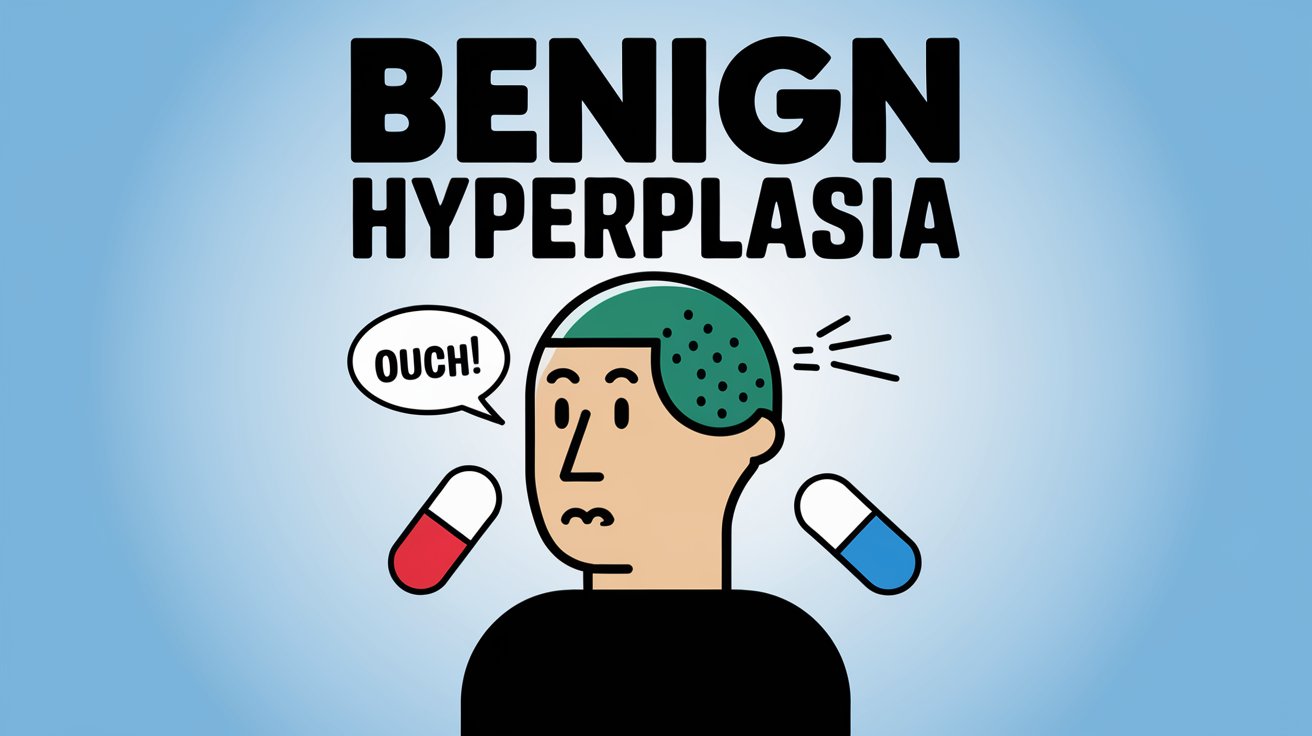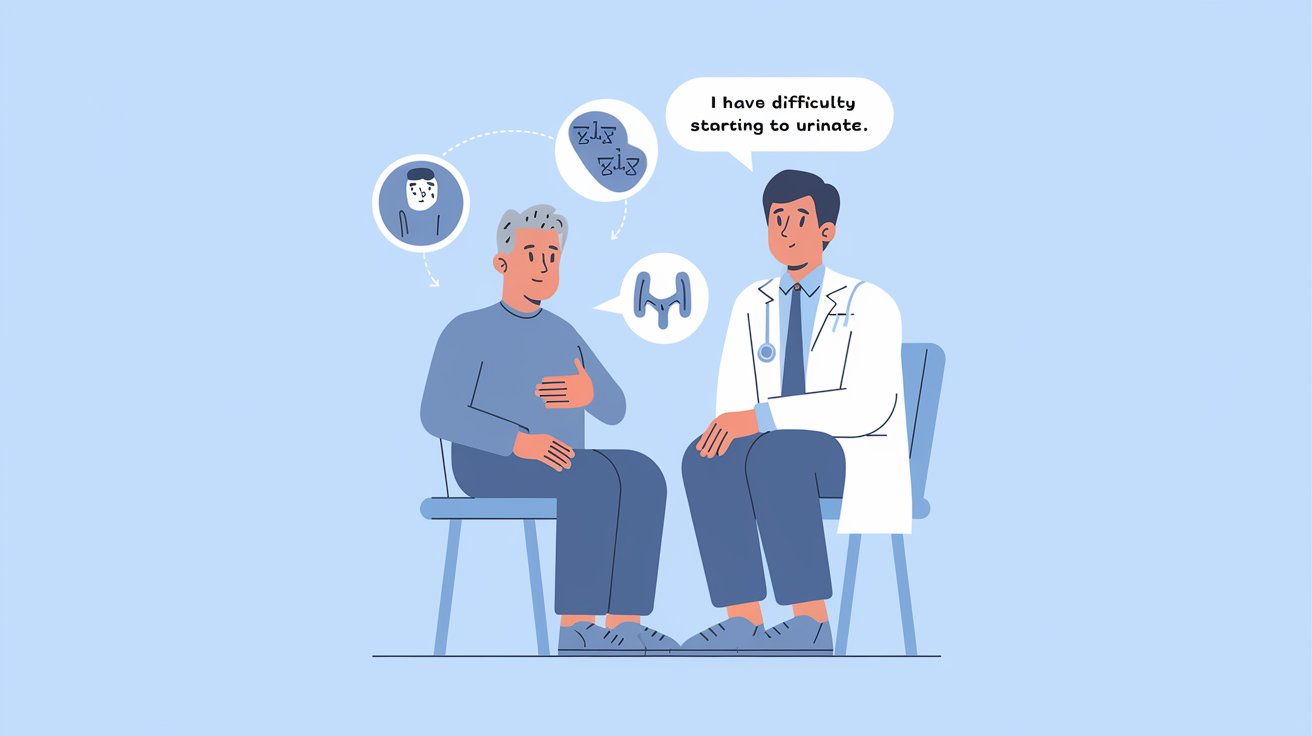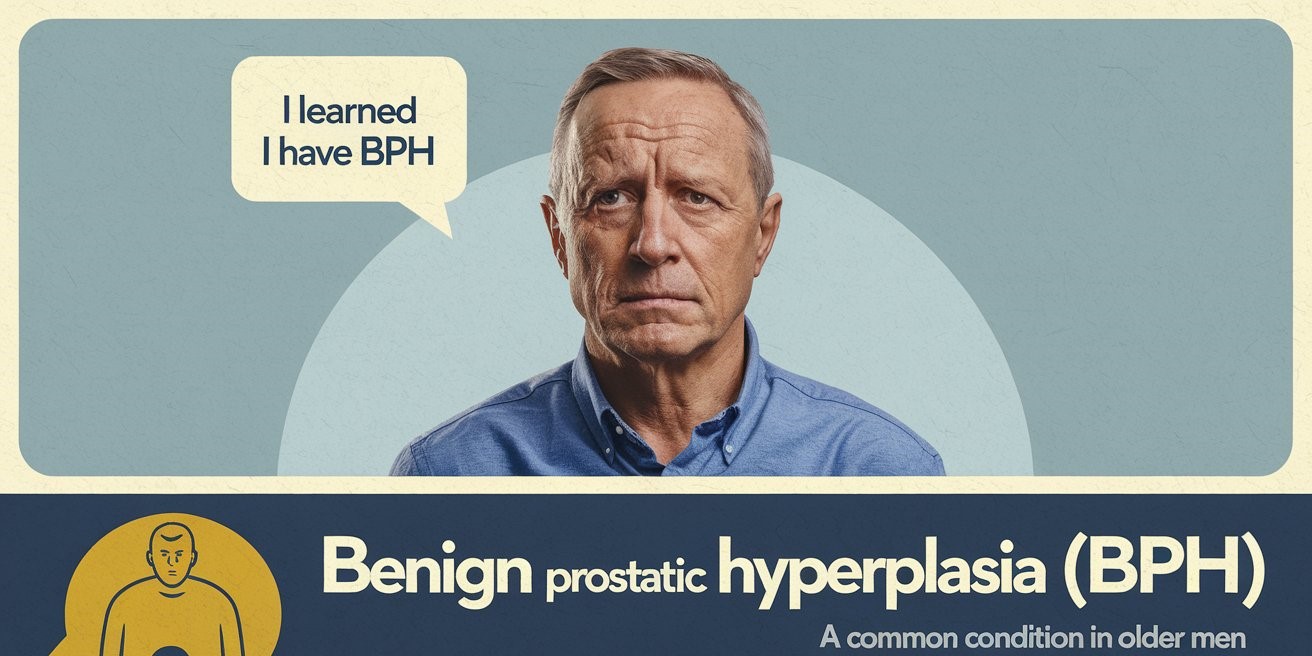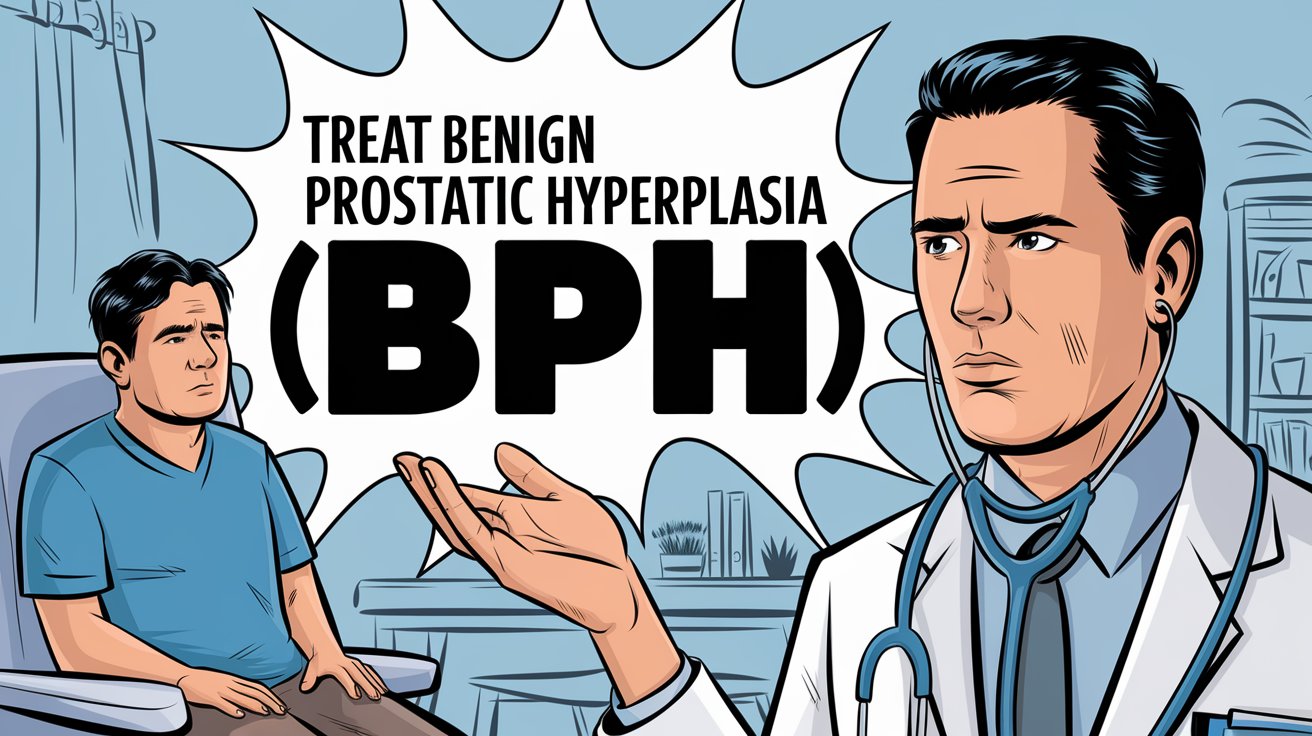Do you have the urge to urinate quite often?
Also, are you experiencing urinary blockage?
This may be due to BPH!
BPH?
Yes! BPH stands for Benign Prostatic Hyperplasia, a common urinary concern as men age. Suppose you are someone experiencing a few uncommon symptoms than the usual times. In that case, this article will help you find the majority of the things that you need to know about Benign Prostatic Hyperplasia. Beginning with,
Understanding BPH in Men
What is Benign Prostatic Hyperplasia (BPH)? Benign prostatic hyperplasia (BPH) is one of the common health issues that occurs when the man’s prostate gland grows larger than usual. This prostate gland is located generally in the shape of a walnut just below the bladder. An enlarged prostate is a non-cancerous growth that generally occurs within the aging process and is more prevalent, particularly in men over 40.
Benign prostatic hyperplasia (BPH) is one of the common health issues that occurs when the man’s prostate gland grows larger than usual. This prostate gland is located generally in the shape of a walnut just below the bladder. An enlarged prostate is a non-cancerous growth that generally occurs within the aging process and is more prevalent, particularly in men over 40.
Common Causes of BPH
Now, looking at the causes of BPH the exact cause of BPH is not well understood, but it is believed that the link between hormonal changes and men’s age can be a cause of Benign Prostatic Hyperplasia! This is why because hormones such as testosterone and other hormones like dihydrotestosterone (DHT), play a role in prostate growth. BPH is a urinary concern that is not caused by infections or cancer, though the symptoms can overlap with those of prostate cancer. So do consult with a healthcare provider for diagnosing the issue.
Looking a bit deeper as testosterone levels in the body decline, estrogen levels tend to remain relatively stable. This imbalance of the hormones may trigger the growth of prostate cells, leading to an enlarged prostate. Additionally, there is a thing you must have an understanding of which is older people assigned male at birth (AMAB) tend to have higher levels of dihydrotestosterone (DHT), which is a more potent form of testosterone. DHT plays a key role in prostate development, and increased levels of DHT in older men can contribute to prostate enlargement. Together, these hormone changes—low testosterone, stable estrogen, and elevated DHT—are believed to play a significant role in the development of BPH.
Symptoms of Benign Prostatic Hyperplasia (BPH)
So, in every case of a health concern, there are symptoms that vary from mild to severe, Common signs include:
 ✦Frequent or urgent need to urinate
✦Frequent or urgent need to urinate
✦Increased frequency of urination at night
✦Difficulty starting to urinate
✦Weak urine stream or stream that stops and starts
✦Dribbling at the end of urination
✦Feeling like the bladder isn’t fully emptying
✦There are a few symptoms that are generally uncommon but seen such as urinary tract infection and blood in urine.
Complications
Soon after you observe yourself with the above symptoms you must consult with a urologist this is so because if left untreated, BPH can lead to complications such as:
✦Urinary tract infections (UTIs)
✦Bladder stones
✦Kidney damage due to blocked urine flow
✦Bladder damage from long-term retention
Who is Most Affected by BPH?
BPH (benign prostatic hyperplasia) primarily affects men AMAB as they age. It typically starts around age 40, with symptoms increasing after age 60. By age 85, nearly 90% of men experience some form of prostate enlargement.
BPH Affects Which Age Group?
BPH most commonly affects men over 40, with its prevalence rising significantly after age 60.
Diagnosing Benign Prostatic Hyperplasia
During a physical examination, a healthcare provider can conduct a digital rectal exam in which he or she can feel the prostate to look for an enlarged bladder, urethral discharge, or swollen and painful lymph nodes in the groin. Medical tests can also be conducted to determine lower urinary tract problems associated with BPH. Common tests include:  ✦Urinalysis - Urine flow test- calculates the rate at which one can urinate.
✦Urinalysis - Urine flow test- calculates the rate at which one can urinate.
✦Prostate-specific antigen (PSA) blood tests
✦Prostate biopsy
✦Urodynamic tests
✦Cystoscopy
✦Transrectal ultrasound
✦Post-void residual urine test -this is done by measuring the leftover urine amount in the bladder after the urinary process.
✦Ultrasound or MRI can be employed to estimate the size of the prostate and find out if any anomaly exists in the prostate.
Radiology in BPH Diagnosis
In diagnosing BPH, radiology also has a prominent role. Ultrasonography and MRI are applied to:
✦Evaluate prostate size and volume.
✦Observe for obstruction or urethral compression.
✦Note complications such as bladder stones or kidney damage that might have been caused by prolonged urinary retention.
How to Treat Benign Prostatic Hyperplasia (BPH)?
The good part is that relying on the severity of symptoms urologist will best help you in treating BPH due to the medical advancements this can be reversed too! The first thing to help you treat BPH is medications. They will help relax the muscles around the prostate and improve urine flow. Medications may include alpha-blockers such as Tamsulosin and Terazosin, which are used to relieve symptoms, or 5-alpha reductase inhibitors such as Finasteride and Dutasteride to slow prostate growth. Sometimes, a combination of these medications can bring about better relief only with medical advice do not self-diagnose to avoid complications.
The first thing to help you treat BPH is medications. They will help relax the muscles around the prostate and improve urine flow. Medications may include alpha-blockers such as Tamsulosin and Terazosin, which are used to relieve symptoms, or 5-alpha reductase inhibitors such as Finasteride and Dutasteride to slow prostate growth. Sometimes, a combination of these medications can bring about better relief only with medical advice do not self-diagnose to avoid complications.
When medications fail to produce the desired results, or if symptoms worsen, and complications set in. Prostate tissue blocking the urethra may be removed with surgery like TURP, laser surgery, or robotic surgery to relieve urinary problems.
There are minimally invasive treatments that are less invasive than traditional surgery, such as prostatic urethral lifts or Rezūm™ therapy. Outpatient procedures typically have shorter recovery times and fewer side effects.
In the end, the best treatment for BPH is always an individual thing: age, severity of symptoms, and overall health.
Preventing BPH: Lifestyle Tips
Although BPH cannot be completely prevented, several lifestyle modifications might reduce the risk or slow the progression of this condition. They include:
 ✦Following a healthy diet that is supplemented with fruits, vegetables, and healthy fats.
✦Following a healthy diet that is supplemented with fruits, vegetables, and healthy fats.
✦Maintaining physical activity and preventing obesity.
✦Limit alcohol, caffeine, and processed foods.
✦Also, managing underlying diseases such as heart disease, diabetes, and obesity might additionally help you out in preventing the severity of BPH.
The Bottom Line:
Benign prostatic hyperplasia is very common and often affects most men by the time they reach their old age. Sometimes, it might be distressing, but effective treatments are given to alleviate its symptoms and the complications that accompany it. Always consult a urologist if you suspect any symptoms associated with BPH. Many males with BPH can lead an active and healthy life with the right care.
